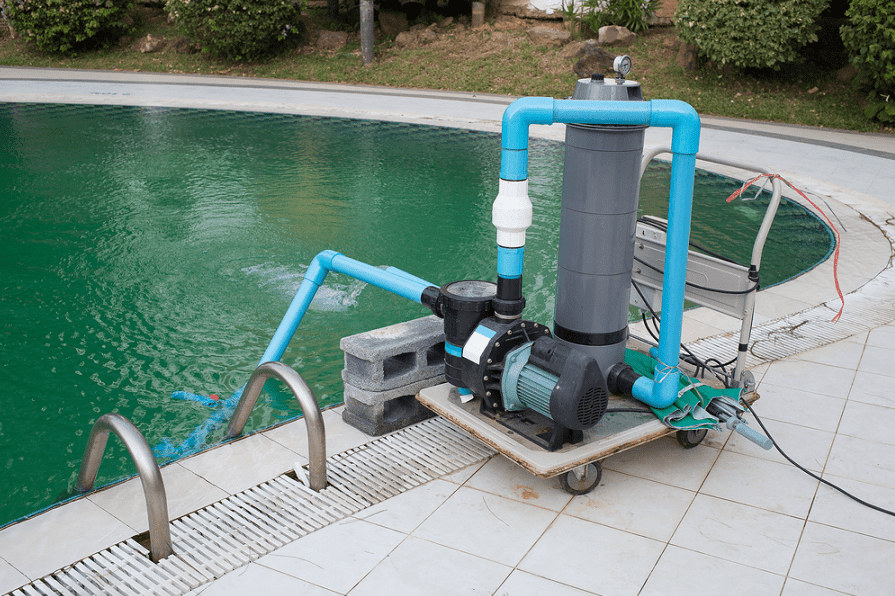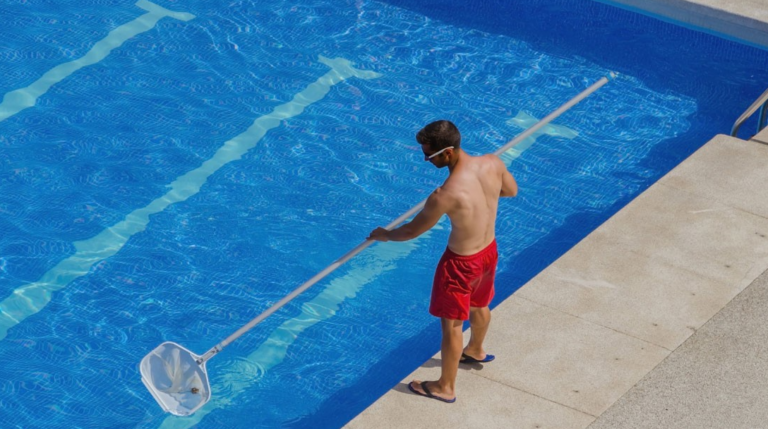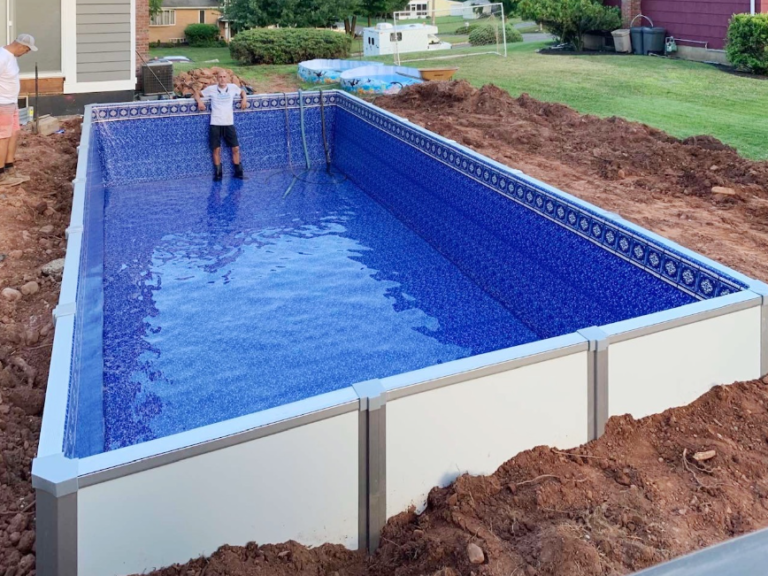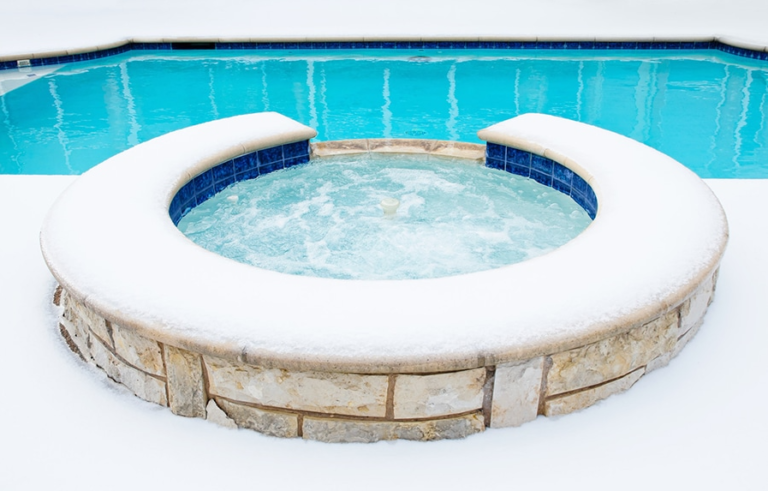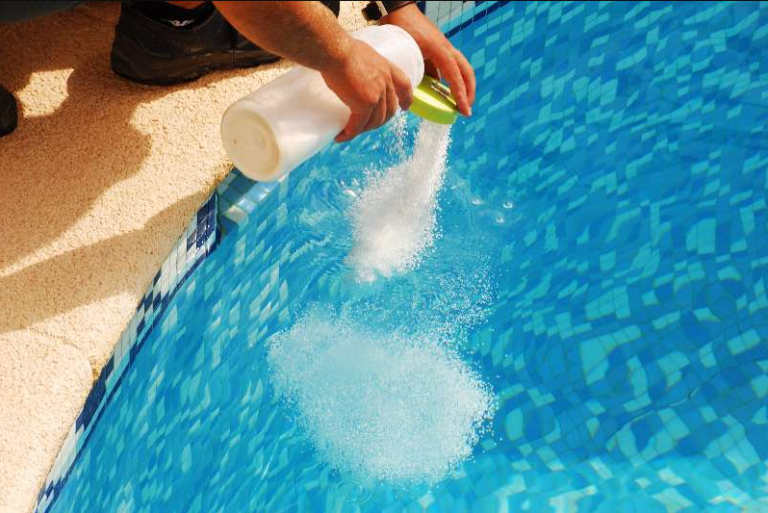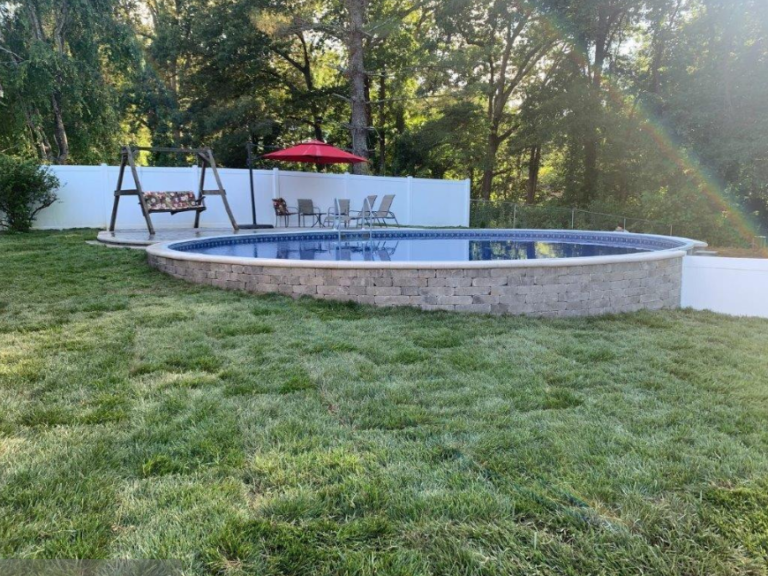Steps to Prime a cool pump
How to Prime a cool pump in easy 4 steps:
The biggest part of pool maintenance is keeping things running smoothly. You balance the water, you add sanitizer, you clean the filter—it’s all about maintaining your pool. But sometimes, good pool maintenance also means preventing damage, especially to what can often be expensive equipment. This includes the pump. Especially the pump.
Not only can a damaged pump be expensive to repair or replace, but unless it’s fixed or you get a new one, but your pool will also essentially shut down. Water can’t circulate without a pump, which means it can’t run through the filter, which means the longer it sits, the dirtier it gets.
There are many things that can prevent a pump from working properly. Thankfully, many of these things can be avoided simply by knowing how to prime a pool pump.
Water pumps will lose pressure if shut off for an extended period of time, such as in winter. To get the pump working again, it needs to be “primed”: water needs to be pumped back into it and forced in to create enough pressure to start pumping again. Although the methods vary slightly for different types of water pumps, the steps below will show you the basic steps for priming this type of water pump.
According to the US Geological Survey, 15% of the population in the United States relies on private wells as their primary source of drinking water. If you’re nervous about installing a well pump on your property, don’t worry. 43 million people in America have dealt with the same thing!
The first step in getting your wellness up and running is determining what type of well you have. Deep wells and shallow wells require different equipment to get water to you. Depending on the depth of your well, you may need to purchase a well pump that needs to be manually primed.
If you’ve turned off your water pump during the winter months, it’s likely lost pressure. To get it working again, your water pump will need to be primed. This means that the water will need to be pumped back into the pump and forced through it – this creates the pressure it needs to start pumping again. We’ve put together a quick guide to help you through the basic steps of priming your water pump.

What is pump priming?
Priming is a process in which the impeller of a centrifugal pump is completely immersed in the liquid to be conveyed without entrapping air inside. This process is necessary before starting the pump. It is recommended to prime the centrifugal pump and then only start the pump. This can be considered as a preliminary step to prepare the pump for operation and to avoid dry running of the pump.
Now that we learned what pump priming means, let’s understand why it is needed.
Priming simply means preparing or getting something ready for operation.
For a centrifugal pump to work properly, you need to fill it with water.
When all goes well, a standard (non-self-priming) centrifugal pump looks like this.
After the air is exhausted, the pump will start working again.
Most centrifugal pumps are not capable of pumping vapors or gases and doing so continuously will damage the pump impeller.
What about a self-priming pump?
A self-priming centrifugal pump is able to overcome the problem of air binding by mixing air with water. After getting rid of the air, the pump will continue to move water like a standard centrifugal pump.

Pumps are essential equipment when it comes to chemical processes and product manufacturing. Pumps convert rotational kinetic energy into hydrodynamic energy and help move fluid from one point to another. The pump is driven by motors, the impeller is connected to the shaft and the shafts are connected to the motor. As the motor rotates, the impeller rotates which imparts a moment to the fluid and if it is pressurized and discharged from the pump. In addition to selecting the appropriate pump for the process, the operation of the pump also plays an important role.
Priming industrial pumps is essential to using your pump for its intended applications and maintaining equipment. Priming is the process of removing air from the pump and suction line to allow liquid to flow into the pump at atmospheric pressure and blood pressure. Without priming, pumps will stop working and break.
There are several classifications of industrial pumps on the market with their own priming procedures. Here, we’ll explain the best ways to prime each pumping system so you can maintain the integrity and safety of your equipment.
Why do I need to know how to prime a pool pump?
Almost every piece of pool equipment you own is designed to withstand being wet or submerged all the time. Usually, this is because its working part means it will be near water, and it doesn’t need to fail or deteriorate in that wet environment.
But a pool pump is a little different. Its purpose is to work only with water inside it. It’s not just that it can get wet and not hurt. It’s that if it’s not wet – if it’s not full of water, it’s going to get damaged.
Check for damage.
Make sure you inspect the pump thoroughly. You will need to pay attention to fittings such as piping for damage such as cracks. If the system is shut down for the winter, it is even more important to perform these checks thoroughly. The drain plug will need to be checked for problems such as re-tightening. A good way to check the valves is to operate them manually to make sure they are working properly. Check that all hardware such as nuts and bolts are firmly in place, then also inspect belts, pulleys, and safety guards.
What are self-priming good pumps?
Not all well pumps need to be manually primed, even when you first install them. To understand the difference, you need to understand the two basic types of good pumps.
Submersible well pumps operate entirely underwater, where the pumping unit is placed inside the good casing and connected to a power source at the top of the well. This type of good pump works best for deep wells and does not need to be primed because it works underwater.
Non-submersible good pumps will work best for shallow wells. Since they operate over well water, they will need to be primed when first installed. Read on to know the steps for priming a shallow well pump.
For beginners working with a well pump for the first time, the EPA has a helpful diagram that explains the components of a well pump.
March centrifugal pump with flooded suction
Centrifugal pumps work on the scientific principle of centrifugal force, where water is propelled by a mechanism. The system is a pump with an impeller attached to a rotating column inside a shaft. These are connected to both intake and discharge connections. The impeller creates pressure in the liquid inside the shaft, “throwing” the water out of the impeller through the discharger.
For this pump to operate, the liquid must already be inside the flood suction. If the fluid is at an acceptable level, the pump is primed and ready for use. If there is air in the system, the pump may suffer from an air lock and the liquid (either partially or completely) will not leave the pump. To remove air from the system, install a bleeder valve, or a coupler on the discharge side can be opened to the atmosphere to allow air to escape. Below is an example of a bleeder valve:
The liquid should already be in the pump when the coupling is opened. If the liquid is corrosive or hazardous, great care must be taken when opening the coupling so that no liquid comes into contact with the operator. It is normal for a small amount of liquid to come out when the couple is opened.
In a centrifugal pump, the fluid suction is the point from which the liquid exits. The liquid is placed on a level above the suction port of the pump and allows the liquid to reach the pump by gravity.
Why is pump priming important? Is pump priming necessary?

When we start the pump, the impeller will rotate. Centrifugal pump impeller with development pressure proportional to the density of the fluid in the impeller. If the pump casing is not filled with water/fluid and the air is present, the impeller will run in air, creating negligible pressure which will not be sufficient to suck the fluid from the source, and hence, we Will not be able to transfer fluid. This is why pump priming is required in centrifugal pumps.
Now you must be thinking is there any solution or do we have to prime each pump before starting? The solution is a self-priming pump. These are available in the market and do not need to be primed. Let’s go ahead and study them in detail.
Inspect the system for damage. Check all piping and fittings for any cracks, or damage, especially if the system has been shut down over the winter. Check each drain plug to see if it needs re-tightening, and manually operate any valves. Ensure that all pumping system nuts, bolts, and anchoring fasteners are in place and properly tightened. You should also inspect any safety guards, belts, and pulleys that may be there.
How to Prime a Centrifugal Pump
Centrifugal pumps are installed in two ways,
Suction above the pump
Suction under the pump
In both cases, the steps of priming the centrifugal pump are slightly different. We will discuss both cases. Now that you learned why priming is important, let’s go through the steps to prime a centrifugal pump.
Suction above the pump
Pump priming
As you can see in the picture above, the suction is on top of the pump. The steps for pump priming are described below.
First, open the vent line in the pump or the discharge valve on the pump.
Now slowly open the suction valve of the pump. This will allow liquid from the tank to enter the pump. Keep the vent line open until liquid comes out.
As the liquid comes out of the vent line, it indicates that the air in the pump has been replaced by liquid. Close the vent valve.
Now that the priming process is complete, you can start the pump.
Large pumps used in industries come with a vent line as it is not possible to check whether the liquid is coming out of the discharge valve or not but in-house installed pumps i.e. pumps for transferring water from underground tank to tank. (water pump) ) Since the pump discharge is easily visible, it does not have a vent valve. Now that the priming process is complete, you can start the pump.
Large pumps used in industries come with a vent line as it is not possible to check whether the liquid is coming out of the discharge valve or not but in house installed pumps i.e. pumps for transferring water from underground tank to tank. (water pump) ) Since the pump discharge is easily visible, it does not have a vent valve.
Prepare a hose that can be connected to an independent water source. Flush the hose to remove any buildup and make sure you have clean water. Run water through it, keeping the stream going for a few seconds before turning it off. This is especially important for hoses that are not routinely used or have not yet been used this season.
Many people choose to use their garden hose or their washing machine hose connected to their garden hose. However, if your garden hose contains lead, know that you should not drink the water from it. If you’re using it for a well, make sure you have a way to filter the water before and after the hose.

Suction under the pump
If the liquid from a pit or tank is installed on the ground and the pump is installed above the surface of the tank, it is subject to suction under the pump because the pump has to draw the liquid below its surface. In these types of pumps, a foot valve is installed at the bottom to aid in priming (discussed in the priming by installing a foot valve section) and an external line is provided at the discharge of the pump through which we discharge it. Used to prime. The detailed steps are described below.
First, close the discharge valve. (Obviously, if the pump is not running, the discharge valve will be closed)
Now open the vent valve of the pump.
Now open the external supply line valve, this will fill the pump with liquid, and close it as soon as the liquid comes out of the vent line.
The liquid exiting the vent valve ensures that the air inside the pump is replaced by liquid.
Now the pump is primed and one can start the pump.
Why is priming a good pump important?
Simply put, your well pump will need to be primed to function properly. A priming well pump is a process of manually creating a pressure vacuum by which water can be drawn from the well and directed through your water lines.
Often, well pumps will only need priming when your well pump is first installed. Next, you’ll need to re-prime your well pump after any pump failure–one might think of this process as “re-calibrating.”
Priming by installing a foot valve
In this method, the suction of the pump is below the pump and the pump has to suck liquid from below its level foot valve. The foot valve is nothing but a non-return valve [NRV Valve] which will open only in one direction i.e. from bottom to top. Since the pump was running, the foot valve would remain open and allow liquid to flow from the sump to the pump. As soon as the pump is turned off, the pump will stop suctioning the liquid, and the liquid will flow downstream from the pump. Here the foot valve is an NRV valve and will close and not allow the pumped liquid to go into the sump, and therefore the liquid will stay in the pump and the pump does not need to be primed.
These were the ways we can use industrial pumps properly. To avoid the priming operation, self-priming pumps are also available. Let us know what self-priming pumps are, and the working of self-priming centrifugal pumps in detail.
A centrifugal pump without flooded suction
This type of pump priming requires that the suction line between the tank and the pump be filled with liquid.
To accomplish this, the suction pipe in the tank must be below the liquid in the tank. The tank should have a check valve as close to the start of the suction pipe as possible. After the pump is used, there should be liquid in the suction pipeline unless the tank is empty. Often the suction pipe is filled using a “t” connection. Below are examples of correct and incorrect mechanisms.
Step-by-step instructions for priming a good pump
These steps will show you how to prime a shallow well pump (also known as a non-submersible well pump). At each step along the way, you’ll want to inspect the well pump components for damage, leaks, or cracks in the material. If your well pump won’t prime, damage to the well pump may be the reason.
Disconnect the well pump from all power sources.
Remove the prime plug. This is usually a square or hexagonal plug on the top of the pump.
Locate and open the release valves. This will stop the pressure from building up.
Run the water hose to the hole where the prime plug was.
The water you use to prime your good pump should be the same as the intended use for the well water. For example, if you are priming a shallow well pump to pump potable water from a well, you will need to use a hose to fill the tank that discharges clean potable water. be
Turn on the water and allow the pump casing to fill with water. You will notice that the casing will begin to overflow from the prime plug hole and release valves when it is full.
Put the prime plug back where it was, and reconnect the pump to power. If the cycle runs normally and starts and stops as it should, you’ve succeeded!
What is a Self Priming Pump? Self-priming centrifugal pump
Not every pump needs to be primed, there is also a self-priming pump that does not require manual priming. Priming Mode and Pumping Mode A self-priming centrifugal pump has two stages of operation. In priming mode, the pump acts as a liquid dye pump. The rotation of the impeller creates a vacuum in the ‘eye’ of the impeller which draws air into the pump by suction and also forms a cylindrical ring of liquid inside the pump casing. This gas tight seal blocks air from the discharge line to the suction line. Air pockets trapped in the liquid are forced out of the pump discharge by the rotation of the impeller. Now as all the trapped air is expelled, the liquid will slowly start to enter the pump. Now the pump is in pumping mode and starts pumping liquid/discharge liquid.
Centrifugal pump with priming reservoir chamber without flooded suction
To properly prime this pump, the priming reservoir located on the front of the pump must be filled before each use. For a 750 priming chamber, the pump should be no more than 10 feet from the liquid source. Other priming reservoir chambers may be placed further apart. Always be sure to check with the manufacturer. If you need help identifying the different parts and components of a March pump, consider watching the video below.
The chamber should be checked after each use to make sure it is full of liquid, as the liquid may leak out of the chamber. A check valve can be installed to assist the monitor. It can also increase your friction losses. If it is not, there is a cap on the top of the chamber that can be removed and liquid can be poured into the hole.
Troubleshooting Primed Well Pumps
What should you do if your well pump won’t prime? If your well pump is not working, the problem is most likely due to a broken pump component. These components may include feet or check valves that need to be replaced. leaky pipes or fittings; or lose ties.
If you notice that your pump is losing pressure (you can monitor your pump’s water pressure by installing an external pressure gauge), the problem is likely due to a blockage somewhere along your property’s water lines. Maybe. If everything is working properly, but you are still not satisfied with your water pressure, you can also install a booster pump. The process of priming the well pump with the pressure tank is the same as described above.
After fixing any of the above problems, your well pump will need to be primed again to function properly.
Depending on how long your pump has been dry, it may take a few tries to prime it.
Sometimes, no matter how many times you go through this process, the pump just won’t prime. If it does, you can try some other tactics to keep it going.
Why is priming important in centrifugal pumps and not in reciprocating pumps?
Liquid suction is critical to the pump and needs to be generated to achieve low pressure. In a reciprocating pump, the piston is used as part of the pump operation. When the pump is in running condition, the piston moves back and creates less pressure in the pump chamber. This pump creates suction due to the pressure difference between the chamber and the tank and will move the liquid from the tank to the pump regardless of the presence of air. So we don’t need to do priming steps.
Whereas, in a centrifugal pump, the working principle is centrifugal force, and there is no seal that prevents it from exchanging the air in the pump with the impeller. This centrifugal pump cannot suck liquid and can only push liquid. In a centrifugal pump, the atmospheric pressure of the suction tank forces the fluid into the suction of the centrifugal pump so the centrifugal pump requires priming.
What happens when a pool pump runs dry?
The pump is like the heart of your pool’s circulation system, and the water is its blood. Without water flowing through it all the time, the pump motor will begin to create friction, which creates heat. This will overheat and melt the seal.
If it runs without water for too long, and the pump itself overheats, the heat can damage the PVC pipes connected to it, as well as other components of the plumbing system.
Eventually, the pump itself will not be able to withstand the heat, and it will seize, possibly breaking beyond repair.
Depending on the brand and type of pump you have, replacing it can be quite expensive. Plus, it hurts to spend that much money — any money, really — when the damage could have been so easily prevented.
Overheating, melting seals, PVC damage, premature pump death – all of these can be avoided with pump priming.
How about a convertible jet pump?
A convertible jet pump is a well pump with an additional pipe, which helps it draw water from extremely deep wells, over 90 feet deep! Since convertible jet pumps have two pipes (one for water suction and one for pushing water to your outlet valve), both pipes need to be filled with water, as described in step 5 above. Is. Also, the process of priming this type of well pump will be exactly the same.
A self-priming centrifugal pump without flooded suction
To prime this pump, the priming chamber must be filled by unscrewing the top cap.
Self-priming 7 should be used no more than 12 feet from the source of liquid. Normally, the liquid does not retreat from exiting the chamber. However, it is still encouraged to check the chamber before each use to make sure it is filled to capacity.
If it is not filled completely, the pump may not be able to suck any more liquid, and again depending on the distance from the source of liquid.
Restore power to the pump and turn on the pump system. Let it run for about a minute. Note that if the water tank pressure is at or above the cut-out pressure of this pump, the pump will not run. If it doesn’t start, that’s why.
If you have opened the relief valves, wait for the water to drain from them and then close them.
Wait for the pump to cycle. If it closes naturally, it is primed. If not, you need to prime again. Try turning on the water through the receiver. If you hear the water pump turn on, you’re good to go.
Repeat all steps until the pump is primed and operating normally. In some cases, you may need to repeat this once or twice more.
If you have a water tank without a steel bladder, try leaving the tank drain open at the beginning of the procedure. In this way, the incoming water can push the air out of the drain and enter the tank. However, when you see water coming out of the drain, turn it off.
What is pool pump priming?
Sometimes, air manages to make its way into your pool pump without doing anything to invite it.
For example, if you live in an area that experiences freezing temperatures during the winter, you may want to drain the plumbing lines before closing your pool. This will keep water from freezing in the pipes, which can damage them. When you blow water out of a plumbing system, you replace it with air.
Come spring, when it’s time to open your pool, if you only start the pump with only air in it, you’ll run into all the problems of overheating. You need to have water flowing in and through the pump before you can fully turn on the system. And you do that by priming the pump.
- Turn the multiport valve to recirculate.
This will direct the water into the filter head, and then right back to the pool.
2. Remove the pole plug.
You will need water to be able to flow into the pump, so before turning on any equipment, remove the plugs in the skimmer(s) you have or turn the jets back.
3. Fill the pump with water.
Remove the pump cover and inspect the inside. If it is dry, you may need to add a little water before turning it on. Make sure all drain plugs are in place, then use a garden hose to prime the pump housing.
Allow water to run in the pump housing for at least two minutes. This will allow some water to enter the pipes that extend from the skimmer to the pump so that there is enough water to create suction in the pump.
4. Turn on the pump.
Replace the lid, and turn on the pump. It may be a little messy and sputtery, and it may take a while, but eventually, you should see water filling the pump housing.
Once the housing is filled with water, the pump is primed, and you’re ready to go!
Add more water to the pump.
Turn off the pump, remove the lid, and add more water. It may be that there is not enough water in the system to create the suction necessary to move it to and through the pump.
Important: It is important that you turn off the pump before adding more water. Removing the cap while the pump is running will also prevent the pump from creating enough suction to function properly. Also, without a lid, some water may leak out of the pump, which defeats the purpose of including it.
Add water through the skimmer.
Instead of letting the water go directly into the pump housing, place the hose in one of the pool skimmers. It could be that air is simply preventing water from moving through the system. Adding water from the opposite direction can loosen things up.
When trying this method, it is not necessary to turn off the pump first. After all, this is how your pool should normally work – water enters the skimmers, and makes its way to the pump.
Next Steps
If you’re still unsure about priming your well pump, or if your well pump isn’t working, call a plumber for additional help. Whether you’re a homeowner or construction or home improvement professional, you’ll save time by simply hiring a plumber, who will be able to diagnose and fix the problem more quickly.
It’s prime time!
While you will most likely have to do this when opening the pool, you may also need to do it during the open season.
Keep an eye on your pool water level. If it gets too low for some reason, or there’s a blockage in the skimmer, and not enough water is getting into the system through the skimmer, it can dry out the pump and cause all of these problems. The ones you want to avoid.
Even if it does, knowing how to prime a pool pump means you’ll be able to fix it quickly and be back to enjoying the pool in no time.
Bottom Line
This was a detailed article on pump priming and why it is needed. If you haven’t seen the other article, read the one where we briefly discussed the different types of pumps. If you have any doubts or questions related to the article, ask in the comment section, and we will try to answer them as soon as possible. In the meantime check out the articles posted on chemical adaptations such as types of reactors. We have post-industrial safety-related topics such as the Safety Hierarchy of Controls. Check them out too. Comment on the topic you’d like us to post on the blog.
